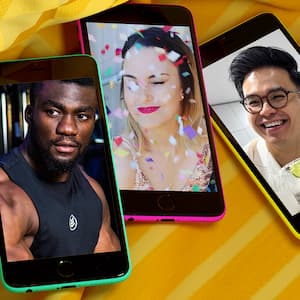Follow the conversation on SBS Australia socials #WeRiseFor #MardiGras2021 and via
The 2021 Sydney Gay and Lesbian Mardi Gras live Saturday 6 March 6pm AEDT on SBS On Demand or catch the full parade at 7:30pm on SBS and NITV.
The American artist, activist, and creator of the modern rainbow pride flag, Gilbert Baker, . How is it that Baker came to create the pride flag, and how did it become such an important symbol for queer people?
Rainbow flags and symbols have been important to a range of different cultures across human history. According to the Bible, God first created the rainbow as a signal to Noah that there would never again be a world-wide flood. Since then, the rainbow has been used for religious and social movements, becoming a symbol of Buddhism in the late 1800s, being used , and . It wasn’t until the late 1970s - almost ten years after the Stonewall Riots - that the rainbow flag was first used as a symbol for the LGBT+ movement.
Throughout the early years of gay liberation, activists largely used the pink triangle to identify themselves and the movement. The symbol stood out when worn, and was easy to translate and understand, but had problematic roots—; the symbol being used as a way to identify, isolate, and punish gay men.
As people began to search for something new. In the lead up to the 1978 Gay Freedom Day Parade in San Francisco, Harvey Milk - the recently elected member of the San Francisco Board of Supervisors - asked Baker to come up with a new flag.
Baker, it is said, was inspired by a number of different factors. , he says that the rainbow was the first and only symbol that came to his mind. He says the initial rainbow, which included eight colours, represented eight different themes; sexuality, life, healing, sunlight, nature, art, serenity, and spirit. It's also said that Baker was inspired by Judy Garland's Wizard of Oz classic, “Over the Rainbow”. Garland's death .
While the rainbow pride flag was successfully raised and used in the 1978 San Francisco march, its status as a queer symbol was not really cemented until the end of that year. In November 1978 Harvey Milk was assassinated, alongside San Francisco mayor George Moscone. The deaths turned San Francisco into a . A huge vigil was organised, with the streets becoming lined with thousands of rainbow flags. It was in that moment of mourning that the rainbow became a symbol of solidarity and strength in the community, solidifying the rainbow flag’s place in queer history.
Since then, the flag has had some major moments in history. In 1994, Baker was commissioned by the city of San Francisco to create . The project became the world's longest ever flag and took months to complete, creating a spectacular image across the streets of the city. , this time creating a mile-and-a-quarter flag in Key West, Florida, stretching from the Atlantic Ocean to the Gulf Coast Sea. In both instances the flag was cut up after use, with portions sent around the world for activists to use in years to come.
The flag has since been used in key battles for LGBT+ civil rights. The when the US Supreme Court declared same-sex marriage to be legal in 2015. It to the victims of anti-homosexuality legislation. In cities around the world, the flag is flown during pride and Mardi Gras festivals, highlighting official support for the events. Its simplicity and diversity has even prompted the transgender, bi-gender and bisexual, asexual, pansexual, bear, kink and other communities to create pride flags with different colours, maintaining similar rainbow structures.
Just like its first major use, the flag is also used in times of mourning and as a way to build strength for queer people. Following the mass shooting at the Pulse Nightclub in Orlando Florida for example, the flag once again became a symbol of solidarity. The colours were , and Sir Paul McCartney .
It is this simple application of such diverse colours that has made the flag such a strong symbol for queer communities. From its beginnings in the 1970s, the simplicity of the rainbow flag has become an essential symbol for queer movements around the world. It symbolises the diversity of our community, as well the solidarity we can show across local and international borders. Potentially most importantly it highlights the colour and movement of who we are. For all of this we have Gilbert Baker, Harvey Milk, and their hundreds of volunteers and supporters to thank.
Follow the conversation on SBS Australia socials #WeRiseFor #MardiGras2021 and via .
The 2021 Sydney Gay and Lesbian Mardi Gras live Saturday 6 March 6pm AEDT on SBS On Demand or catch the full parade at 7:30pm on SBS and NITV.


